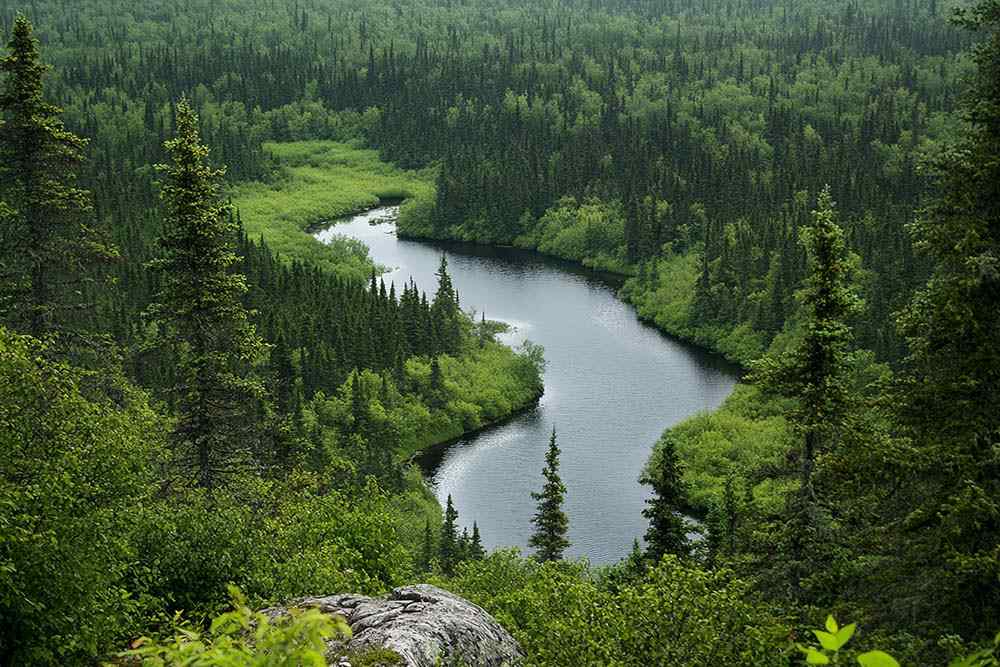Canada’s North is a land rich with ancient traditions, sacred landscapes, and deeply rooted cultures. For travelers seeking more than just scenery, Indigenous culture in Ontario offers profound opportunities to connect with the people, stories, and wisdom that have shaped the land for millennia. In Northern Ontario, Indigenous communities are opening their hearts, homes, and heritage to visitors through authentic and educational experiences.
This blog explores some of the most meaningful Indigenous tourism sites and cultural travel options in the region. Whether you’re a curious adventurer, a respectful learner, or a family seeking unique learning opportunities, Northern Ontario offers a window into a world of resilience, tradition, and beauty.
1. Indigenous Cultural Centers: The Heart of the Experience
Indigenous cultural centers are essential places for visitors who want to understand local traditions, stories, and worldviews.
Anishinaabe Cultural Centre – Kenora
Located in Treaty 3 territory, this centre showcases traditional crafts, history, and sacred teachings from the Anishinaabe people. Guided tours explain the Seven Grandfather Teachings, the importance of oral tradition, and Indigenous spirituality.
Shingwauk Residential Schools Centre – Sault Ste. Marie
Part museum, part educational memorial, this site helps visitors grasp the tragic legacy of Canada’s residential school system and honours the resilience of survivors. It is a must-visit for those seeking honest cultural reflection and reconciliation awareness.
Both these centres are integral to preserving Indigenous culture in Ontario, and visiting them supports community education and healing.
2. Petroglyphs and Sacred Sites
Some of the oldest forms of Indigenous art and spiritual expression are etched into the rocks of Northern Ontario.
Petroglyphs Provincial Park – Near Peterborough
Known as “The Teaching Rocks,” this sacred site features over 900 Indigenous carvings in white marble. It’s one of the most extensive collections of its kind in North America.
While not deeply in the north, it forms part of the cultural story that extends northward. Visitors must remove their shoes in sacred spaces, and photography is often not allowed, emphasizing respect for tradition. These sites embody Northern Ontario heritage and connect us directly to ancient ways of knowing.
3. Pow Wows and Seasonal Gatherings
Pow Wows are living expressions of Indigenous identity. Held across many Indigenous communities in Northern Ontario, these events bring together music, dance, regalia, and food in a celebration of life and culture.
Wikwemikong Annual Cultural Festival – Manitoulin Island
This is Canada’s longest-running Pow Wow and features drumming competitions, traditional dance, craft markets, and Anishinaabe cuisine. Open to all respectful visitors, it’s an immersive Indigenous tourism experience.
Remember:
-
Dress modestly.
-
Ask before taking photos.
-
Watch, learn, and participate when invited.
Attending Pow Wows is a core part of cultural travel in Canada, allowing non-Indigenous travelers to witness and celebrate thriving Indigenous traditions.
4. Manitoulin Island: A Cultural Jewel
Manitoulin Island is one of the best destinations in the world for learning about Indigenous culture in Ontario. It is home to six First Nations communities and offers immersive travel options year-round.
Great Spirit Circle Trail
This Indigenous-led tourism initiative offers experiences like:
-
Storytelling walks
-
Drum-making workshops
-
Traditional cooking classes
-
Canoe trips with cultural interpretation
What makes this special is the community involvement. Every experience is led by Indigenous guides, offering firsthand stories and teachings passed down through generations. For visitors seeking meaningful engagement, Manitoulin is the embodiment of Northern Ontario heritage and hospitality.
5. James Bay Frontier and Cree Lands
For the adventurous traveler, heading north to James Bay opens a gateway to Cree culture and history.
Moosonee and Moose Factory
Accessible via train or plane, these remote communities offer a unique blend of colonial fur-trade history and ancient Cree lifeways.
Visit:
-
Cree Cultural Interpretive Centre
-
Local handicraft markets
-
Guided walking tours explaining Treaty 9 and traditional ways of life
This is a less-traveled route, making it a great option for those seeking a deeper dive into Indigenous tourism without crowds. These communities exemplify strength, survival, and rich storytelling traditions.
6. Lake Superior’s Indigenous Spirit
The vastness of Lake Superior is not just geographic—it is spiritual.
Nanabijou’s Sleeping Giant
This landform near Thunder Bay resembles a giant lying on its back. According to Ojibwe legend, Nanabijou was turned to stone when sacred silver was revealed to outsiders. Exploring these legends gives cultural meaning to landscapes and reinforces the idea that land and spirit are inseparable in Indigenous culture in Ontario.
Also nearby:
-
Fort William First Nation cultural events
-
Elder-led storytelling nights
-
Art exhibits by Anishinaabe and Métis artists
7. Learn From Indigenous Knowledge Keepers
Many Indigenous communities and tourism programs now offer teachings from Elders and knowledge keepers. These sessions may include:
-
Medicine walks (learning about traditional plants)
-
Fire teachings (explaining balance and respect)
-
Sweat lodge ceremonies (available by invitation only)
Always follow community protocols:
-
Ask permission.
-
Be humble and willing to listen.
-
Don’t record or take notes unless invited.
Such sessions represent the most sacred elements of cultural travel in Canada, and participating in them can transform one’s view of life, nature, and society.
8. Respectful Photography and Language Use
When visiting Indigenous sites:
-
Always ask before taking photos, especially of people or ceremonies.
-
Use respectful language (e.g., “First Nation” instead of “Indian”).
-
Avoid assumptions—every nation has unique customs and beliefs.
If you’re unsure, ask. Most hosts appreciate genuine interest and respectful questions.
9. Support Indigenous-Owned Businesses
The best way to ensure ethical and impactful travel is to support Indigenous-owned:
-
Lodges and campgrounds
-
Restaurants serving Indigenous cuisine (e.g., bannock, wild rice, smoked fish)
-
Gift shops offering locally made beadwork, paintings, and crafts
Look for organizations that are part of Indigenous Tourism Ontario or the Indigenous Tourism Association of Canada. Supporting these businesses directly contributes to local economies and cultural preservation.
10. Planning Your Trip Respectfully
Before your visit:
-
Learn about the territory you’re entering. Tools like Native-Land.ca show whose land you’re on.
-
Attend a local Indigenous event in your home city to build awareness.
-
Read books or watch documentaries to gain context (e.g., “We Were Children,” “The Inconvenient Indian”).
When you’re on the land, remember you’re a guest. A smile, a thank you in the local language, and respectful listening go a long way.
Conclusion
Travel in Northern Ontario is not just about lakes and trails—it’s a journey into stories, ceremonies, and communities that have endured for thousands of years. From Manitoulin Island’s immersive tours to Cree legends on the shores of James Bay, every path offers travelers a chance to grow.
For those seeking Indigenous culture in Ontario, this region is a living classroom of knowledge and respect. Embrace it with humility, support Indigenous businesses, and allow the people of the land to guide your journey.
FAQ’s
Q1: Are there heritage centers in Northern Ontario?
A: Yes, many heritage centers in Northern Ontario, like the Shingwauk Centre and Cree Cultural Interpretive Centre, offer deep insights into Indigenous traditions, resilience, and modern cultural expression.
Q2: What Indigenous experiences are available in Northern Ontario?
A: Visitors can attend Pow Wows, join storytelling walks, take drum-making classes, visit sacred sites, or explore Indigenous-led tourism routes like the Great Spirit Circle Trail on Manitoulin Island.
Q3: How can I respectfully explore Indigenous culture in Canada?
A: Respect comes from listening, asking permission, avoiding stereotypes, supporting Indigenous-owned businesses, and being open to learning directly from community members, Elders, and cultural guides during your visit.


